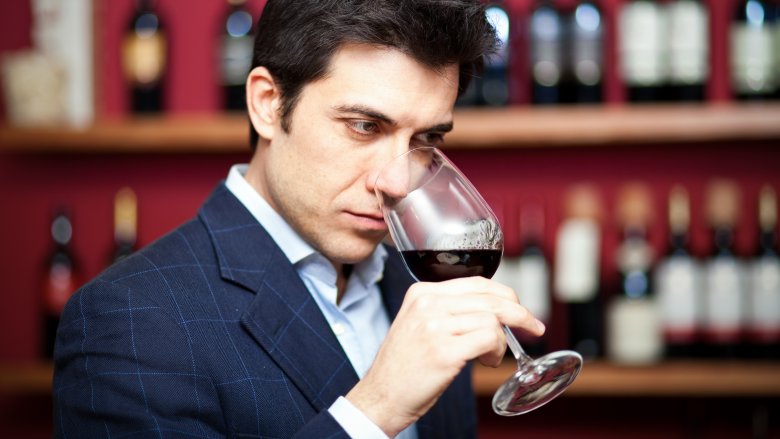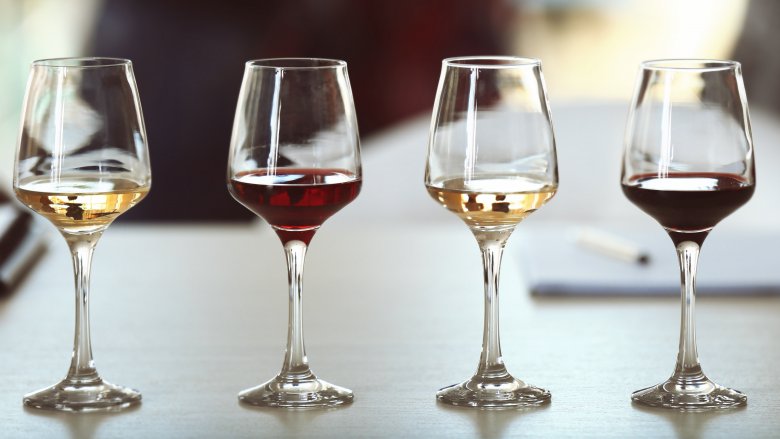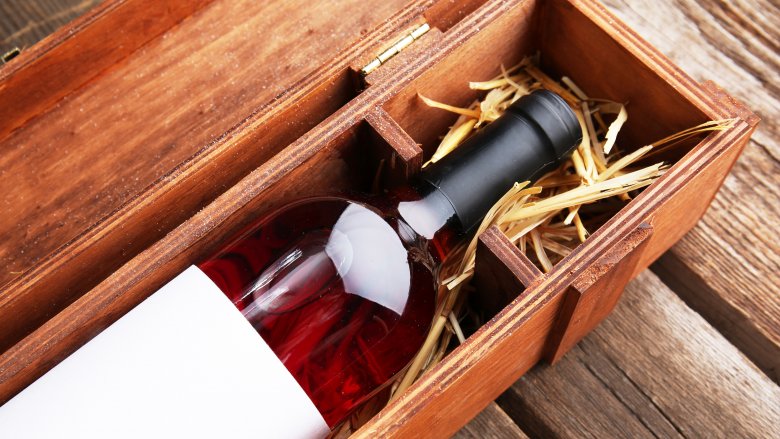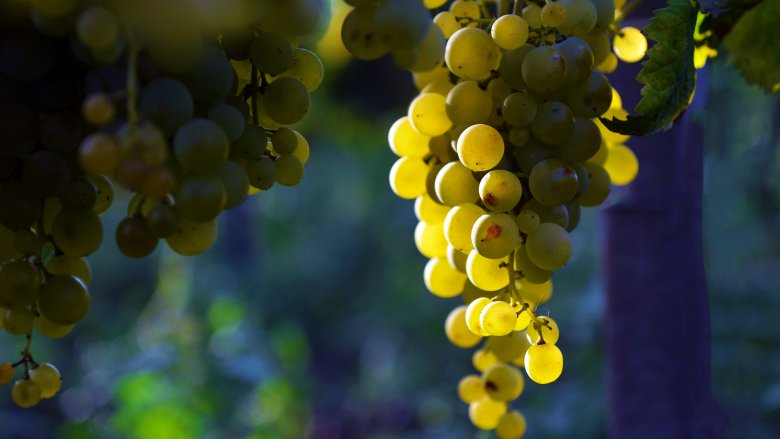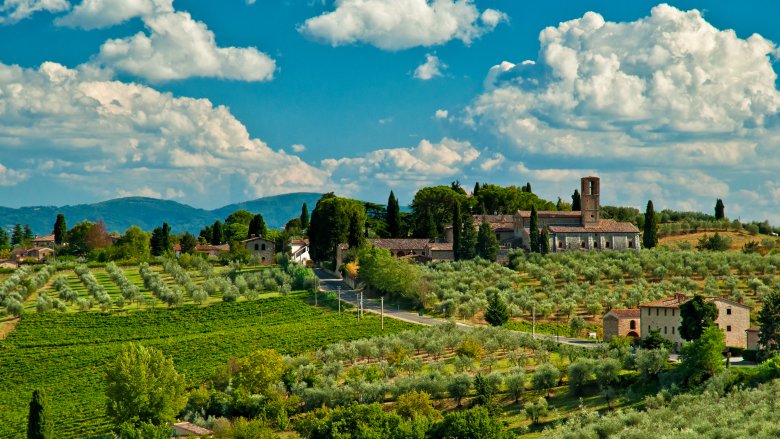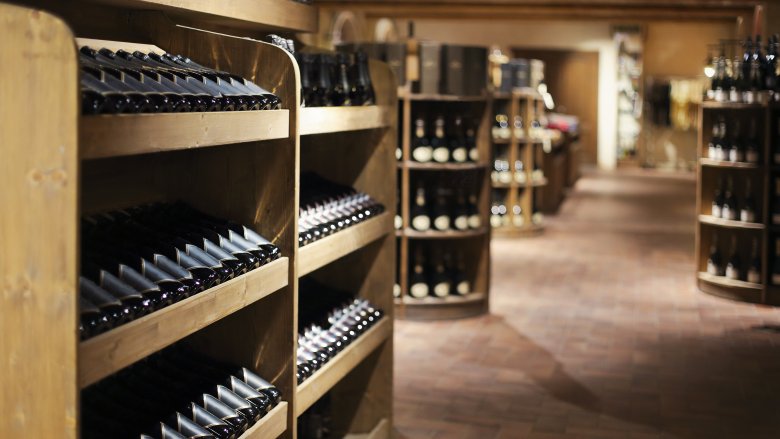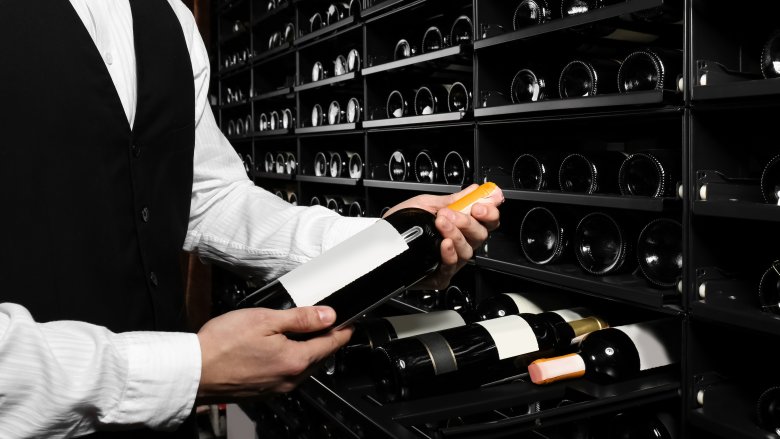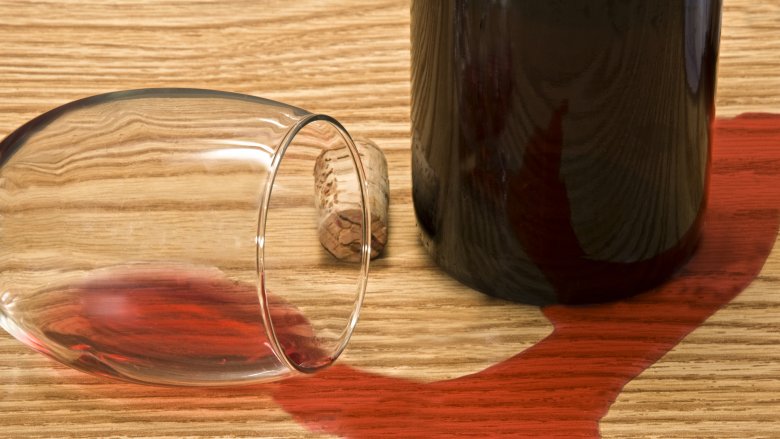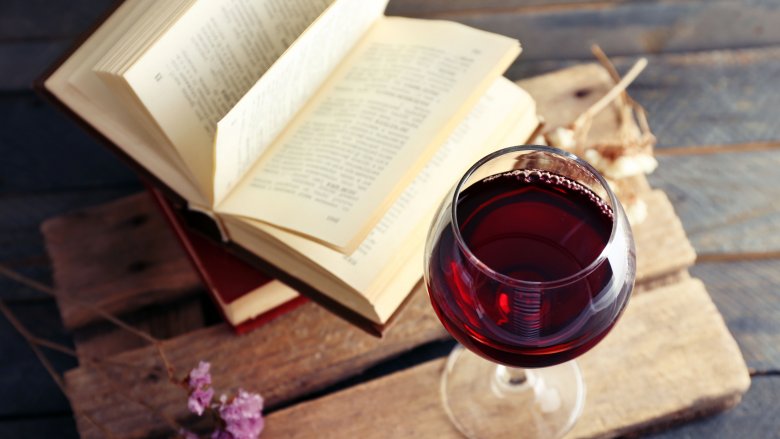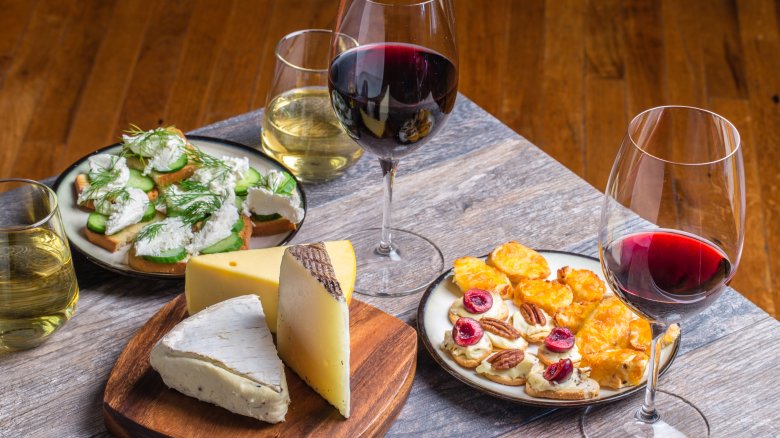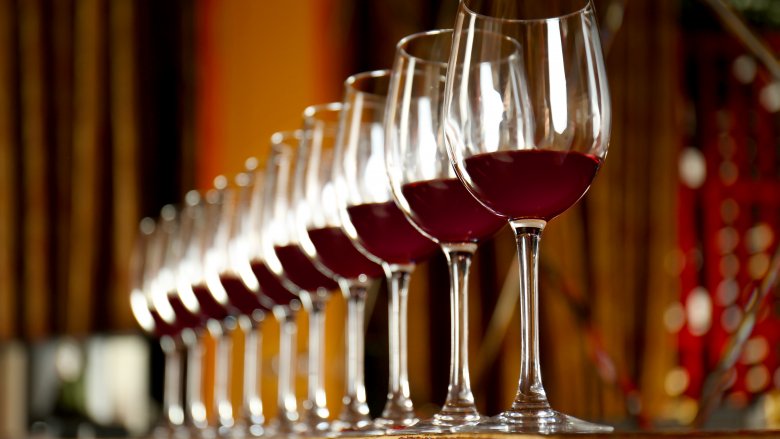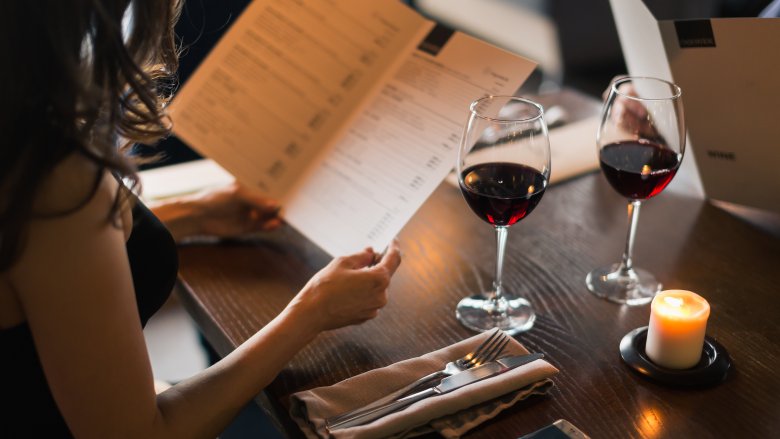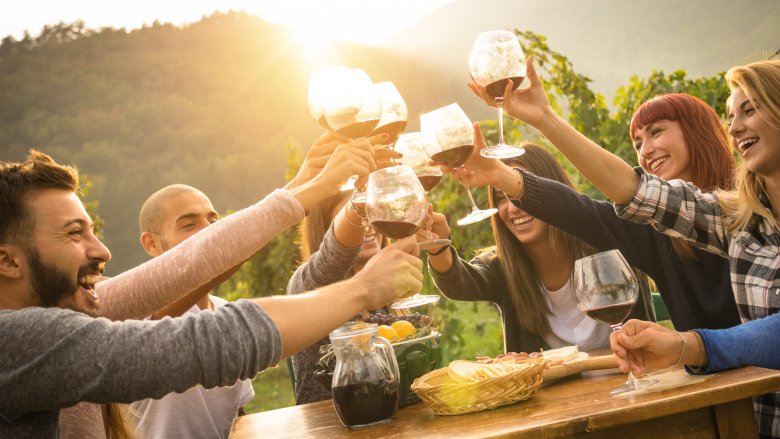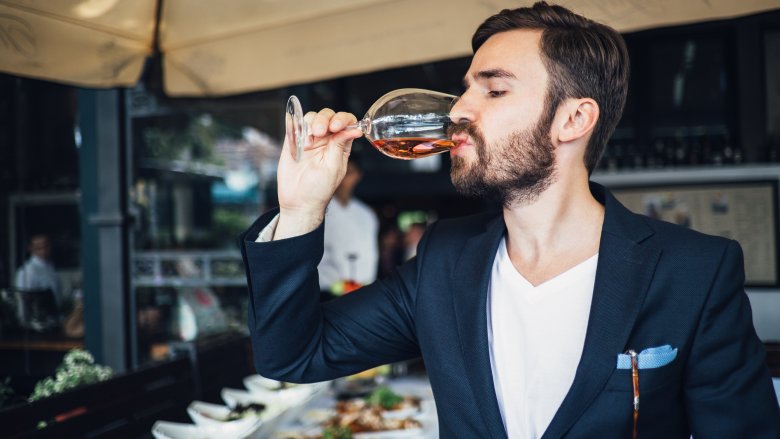Phases Of Becoming A True Wine Snob
Wine: the final frontier. It's the nectar of the ancients; the booze that stumped a thousand wannabes. Wine is a vast and complex subject that, to many of us, is as frustrating to learn as a foreign language or a practical skill, but, if done right, can also be just as rewarding. To say it's a tough topic to learn is an understatement (there's a reason why sommeliers study for years, after all) but once you've got it down, you'll find yourself equipped to handle any wine shop excursion or meal out at a fine restaurant. Before you get to that point, however, you're pretty much guaranteed to go through at least a few of these phases. Just think of it as the path to true snobbery.
Deciding enough is enough
It is a truth rarely acknowledged that, before deciding to step onto that wonderful, snobby path, many of us will experience the wine world's own version of the Kübler-Ross model. Think of it as the five stages of grief, but instead of overcoming some devastating bereavement or loss, you just end up drinking better wine. First, you've got denial. This is the stage most people languish in. Surely you don't really need to know about wine — after all, everyone else gets by, don't they? The stuff you're picking out is fine, it treats you well (usually). All it takes is one bad bottle too many — one Chardonnay paired with steak; one $5 tub of supermarket swill — to move on to stage two: anger.
Making a change
You deserve better than this. You're sick of the bad wines. To hell with the bad wines. And the solution comes — spend more. This is stage three of that five-step process: bargaining. Instead of spending $5, you spend $15. But $15 wine isn't necessarily good wine, so then you spend $25. And maybe it's good, but it could just as well be bad, because you still haven't learnt that vital lesson — money is no guarantee of quality. Next, depression: you begin to think that wine just isn't the drink for you, that maybe you'd rather have a lager or a vodka. This is where too many people fall away, but ignore them — they are lost. Instead, you push through to acceptance, realize that there can be a future for you in the world of wine, and take your first steps towards the Kingdom of the Snob.
Learning the grapes
The first thing you do is get to learning, and you're right to do so. The variety of grape used in the making of a wine is probably the most important factor in determining how it looks, tastes and feels, so getting to grips with a few of the varieties out there is a good place to start. At first, you're a little overwhelmed by the scale of it all — after all, there are over 10,000 varieties of grape, grown all across the planet — but you only really need to know the most popular ones to start with.
Knowing the names is a good start. Cabernet Sauvignon, Merlot, Syrah, Tempranillo, Malbec, Pinot Noir, Chardonnay, Sauvignon Blanc, Riesling — recognize them by name and the next step, which is learning their characteristics, becomes all the easier. As you spend more time with them they seem more and more familiar, and soon enough you come to see them as old friends (especially when you find yourself staring blankly at names like "Arnsburger" or "Prokupac" and desperately trying to figure out whether they're actual grapes or whether someone's just playing a joke on you). Once you've learnt the basic grapes, you suddenly feel that thrilling dash of confidence rising up inside you. So then you turn to the maps.
Geography lessons
Knowing geography is as crucial to knowing wine as anything you'll learn about the wines themselves. It's daunting at first (and how could learning the ins and outs of basically half the planet not be daunting?) but you've come this far, so you take a breath and dive on in. First, there's the Old World and the New World — that's easy enough to distinguish, and within each world you've got your countries. Okay, fine, you took geography at school, so why shouldn't you know them? At the heart of the Old World there's France, Italy, Spain, Portugal, Greece, Germany and a load of other countries you never even knew made wine. In the New World, there's the U.S., Australia, South Africa, China, Japan, Argentina, Chile and — gosh, there are a lot of them, aren't there?
And within them, there are the wine regions. Italy alone has 20 different wine regions. France has around a dozen. Within those regions, there are smaller regions: what's the difference between Napa's Oakville and Oak Knoll? Between Bordeaux's right bank and left bank? How does anybody know all this?
Well, they don't. Not really. Most people's intimate knowledge is limited to a single country or a few countries — maybe more if they're basically academics. So you choose a region you like the look of, learn that region inside out and, once you've learnt all there is to know about it, you decide it's high time you got to drinking.
Shopping
And so the baby bird flies from the nest. This is a big moment. You know your grapes (the important ones, at least), you know your regions (a few of them, at least) and now it's time to step into the wine aisle of the local supermarket — or, even better, to visit a specialist wine shop — and start shopping like a pro.
You're apprehensive at first, even anxious, but excited too. Even limiting yourself to certain regions, there's so much to choose from, and the whole experience feels like being a kid in the world's most grown-up candy store. But what do you pick? Which one is the one? Well, you just can't know. So (and you enjoy realizing this) the best thing to do is just go wild. You choose as many bottles as you like. Maybe a Western European spree: grab a nice Riojan Tempranillo, an Alsatian Riesling and a Cabernet from Bordeaux. Or you go a bit weirder and try out some Greek or Eastern European wines, if they've got them. The world is your oyster.
With your basket full, you take your stash back home and do the only thing left to do: drink. It's a little bit early to be learning the intricacies of the palate and things like acidity, textures and body, so you simply decide which ones you like the most, note down where they're from and which grapes they use, then move on to the next one. This is the best part, right?
Deciding to maybe become a sommelier
You know your stuff. You've got a few favorite wines. This new interest in viticulture has been going on for at least a week now. What else is there to do other than begin researching sommelier courses with the intention of dedicating the rest of your life to the art?
Look at the badges. Look at how awesome they are. You can do it, can't you? After all, you know now that Syrah and Shiraz are the same thing, and that Portugal's whites aren't that great. Yes. This is a good idea. And no, you're not drunk. Maybe you could make a career out of it — work in a Michelin restaurant, get paid thousands every month to tell people what to drink. Is this the best idea you've ever had? It might just be.
Deciding not to become a sommelier
What killed it, then? The hangover? The dawning realization that you don't know what a tannin is? Or maybe you've made your first big mistake. For a novice, mistakes come often, and even a snob will stumble every once in awhile. Among the most common blunders a drinker of wine can make include getting the serving temperature wrong, letting an open bottle sit for too long or even messing up a food pairing.
The bad news is this means that you, like most people who've got a solid week-and-a-half's worth of wine knowledge under your belt, probably aren't cut out to be a sommelier just yet. The good news is: you're learning! The mistakes are all part of the game, and a mistake with wine is usually going to be dramatic enough to mean you'll probably never forget it. Chalk it up as a lesson learned and move on.
Hitting the books
Once you realize mistakes can be made, you realize that you've still got a long way to go before you can truly call yourself a wine snob. You may have the basics, but they're just, well, the basics. Now it's time to dig into the deep stuff. The making and drinking of wine is an art that's thousands of years old, so it's probably not a huge surprise to find that you're going to have to get academic if you really want to know your stuff.
You begin with the bigger websites, and they're fine. But the rabbit hole deepens, and soon you find yourself on the blogs, and then reading interviews with vintners and other giants in the industry. Before you know it, you've ordered a dozen books online and are studying the subject more rigorously than anything you learned at school. This is also the point at which you start to learn about the more complex characteristics of wine — how a wine tastes, feels, smells and looks, and what you can learn about the wine from those characteristics — so it feels natural to be drinking as you learn. For the practice, obviously.
Nailing your pairings
This is arguably the most important thing you can learn as you get to grips with wine, and that goes doubly if you're planning on dining out anytime soon. Correctly pairing wines with your food is the key to enjoying a proper meal, and getting it wrong can ruin your dinner and make you look like a fool, all at once.
Luckily, the basics aren't difficult. You start off with the golden rules: don't drink red with fish, don't drink dry with desserts, don't drink sparkling with steak, that sort of thing — most of this is common sense, and once you can handle that, you can go a little bit deeper. Knowing the difference between congruent and complementary pairing, being able to identify the six basic tastes and understanding the basic components of the taste of your wine (suddenly, you're glad you bought those books) makes all the difference when it comes to navigating complex wine pairings, and the sooner you learn, the sooner you feel comfortable going out for a test drive.
Seeing how far you've come
Around this time, you'll find yourself entering a special, introspective phase in which you look back on your previous self — your younger, foolish, swill-drinking self — and wonder just how you allowed yourself to come this far in life without learning to really love wine. Remember the dark times? Remember when you once bought a bottle of Spanish red wine that was literally just called "Spanish Red"? It all seems so long ago, but in actuality it's probably only been a few months.
During this phase, expect to spend hours staring into the mirror, reflecting on the nature of evolution and existence, wondering how else your life might change over the coming years. Funnily enough, this also tends to be the moment you decide that maybe you should stop drinking alone so much.
Pretending you know what you're doing in a restaurant
Baptism by fire: it's time for your first restaurant outing. Not your first ever restaurant outing, obviously, but your first one where you can pretend to know about wine. And pretend you do, because, let's face it, it hasn't been that long and you're still no expert. There's every chance an ugly mistake will rear its head again — look ye mighty and despair — but if you play it cool, remember what you know and don't try to do anything silly, you know you'll be fine. And yes, that means no splashing out on the $125 Bordeaux despite not knowing your Bordeaux from your elbow.
If you're with friends, you might consider insisting on ordering for the table. It's a terrifying prospect, and if it goes wrong you'll look like a bona fide plod, but if you get it right you'll have succeeded in the enterprise that every wine aficionado seeks to undertake, even if they don't admit it: showing off. Just play it cool, yeah?
Actually figuring out what you're doing in a restaurant
So how do you break out of the "pretending you know what you're doing" phase and into the "actually genuinely know what you're doing" phase? You study. Remember those books you bought? Buy more. Remember the maps you've downloaded? Go back to them and expand your horizons. Remember that brilliant wine shop you found near you? Become a regular. Practice makes perfect. Just consider yourself lucky that practice, in this field, involves drinking wine.
Even in this late phase, you can't help but cheat — but don't go thinking there's anything wrong with that. Before you go to a restaurant, check out their wine list online and do some research into the wines themselves. Or, better yet, ask the sommelier when you're there. That, after all, is their job, and nothing exposes a poser quicker than someone who thinks they know better than the best. Keep going, keep studying, and soon enough you'll be as confident ordering wine on that night out as you are ordering your food.
Becoming the snob
Congratulations — you've made it. You officially know enough about wine that other people are calling you a wine snob. You're ordering for your friends at meals, you've got a few favorites down the supermarket and maybe you're even starting a cellar. These are the good times. Once you're a proper snob, however, you may find yourself wondering: what now?
Answer: you tell everybody. After all, you've earned it. You tell your friends, you tell your family, you tell strangers in the street. You tell them which wines you've just discovered, discuss the latest harvest, insist that they try the bottle you've just bought. And as long as you don't become the dreaded pretentious, know-it-all snob, who can really blame you? Learning to love yourself as much as you love the wine is the final stage on your journey to becoming truly insufferable. Enjoy it.
